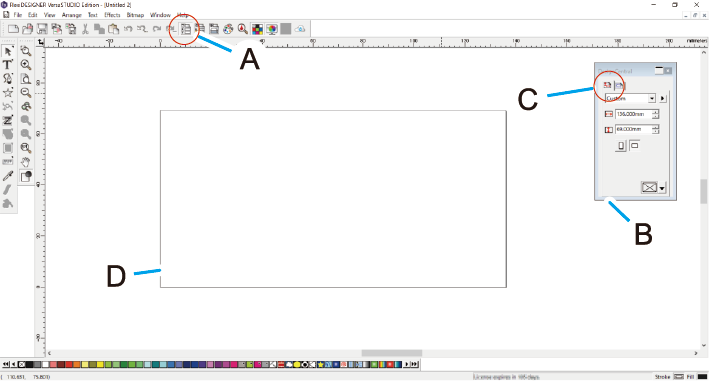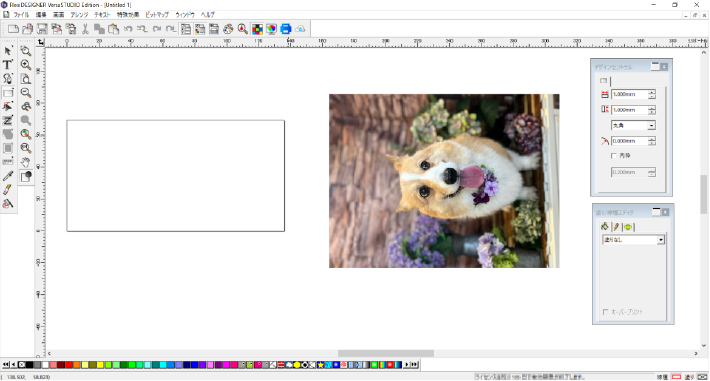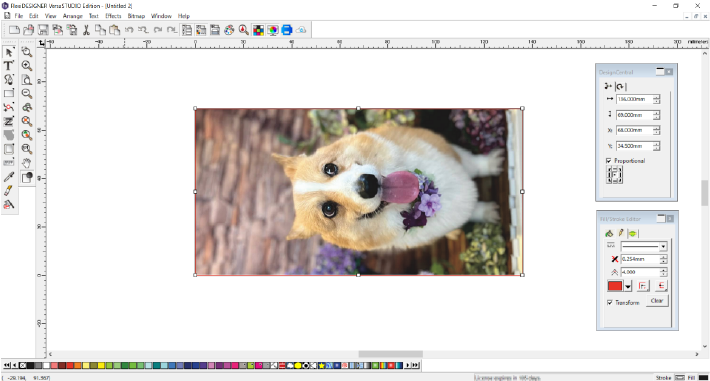Step 1: Creating Printing Data
Measure the printing size of the object, set the printing area, and then create print data.
MEMO Follow the procedure below to operate FlexiDESIGNER Ver. 22.0.0, build number 4176. Operation methods may vary depending on the version of FlexiDESIGNER.
Procedure
-
Measure the printing area (print surface of the object).
This is necessary to set the printing area. Make a note of the measurement when you take it. The printed surface of smartphone cases is 134 mm (5.28 in.) wide and 67 mm (2.64 in.) long when placed horizontally. This time, to print on the entire surface of the case, set the printing area to be larger than the printed surface. Any printing outside of the edges of the printed surface will be wasted, but you can print all the way up to the edges.
-
Start FlexiDESIGNER.
-
Set the printing area according to the procedure below.

-
Create data for printing.
Here, the photos are imported, sized, and trimmed. A primer plate is then created to improve adhesion and a white plate is created to prevent the color of the printed object from showing through.
- Click to save the data.
 icon (A).
icon (A). tab (C), click the pull-down menu
tab (C), click the pull-down menu 
 tab and click
tab and click  .
.

 and then configure the settings as follows.
and then configure the settings as follows. tab:
tab: tab: Type of line: Solid line; Line color: Red
tab: Type of line: Solid line; Line color: Red
